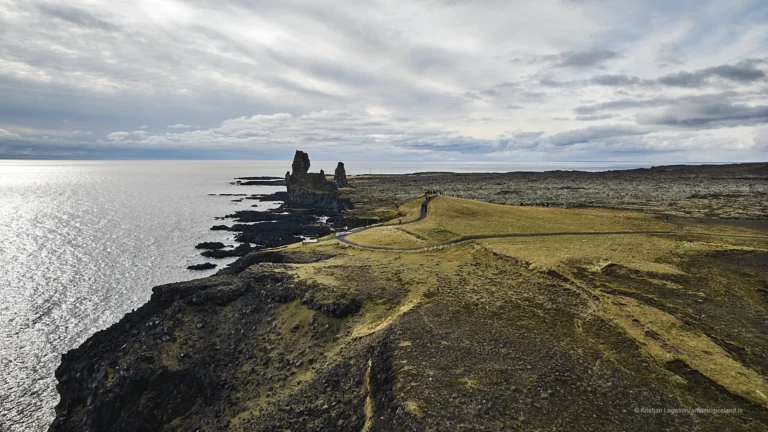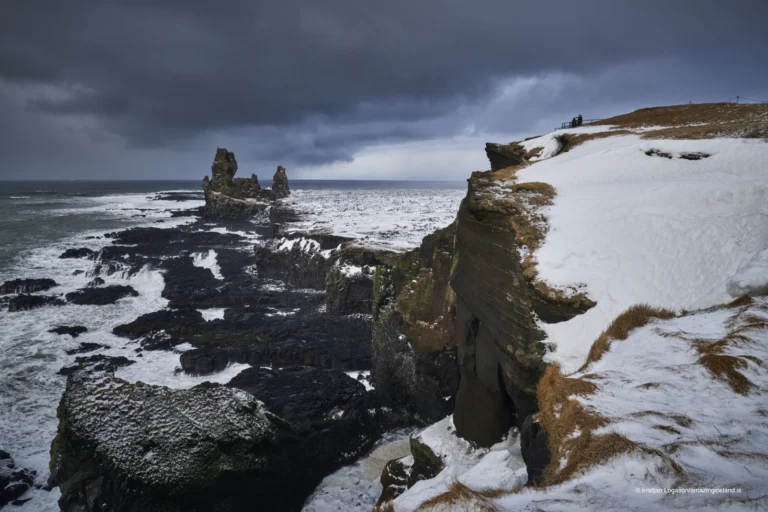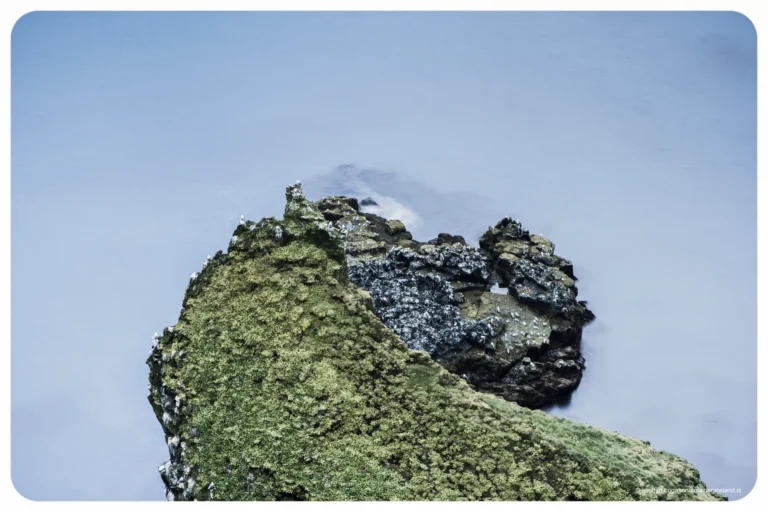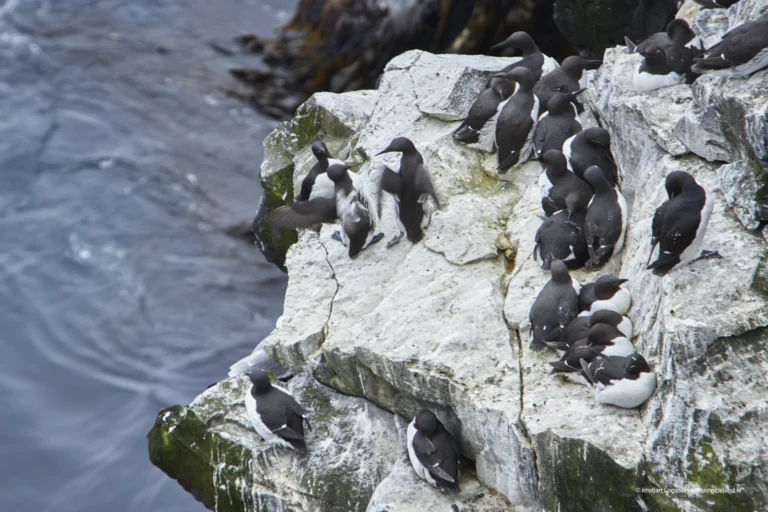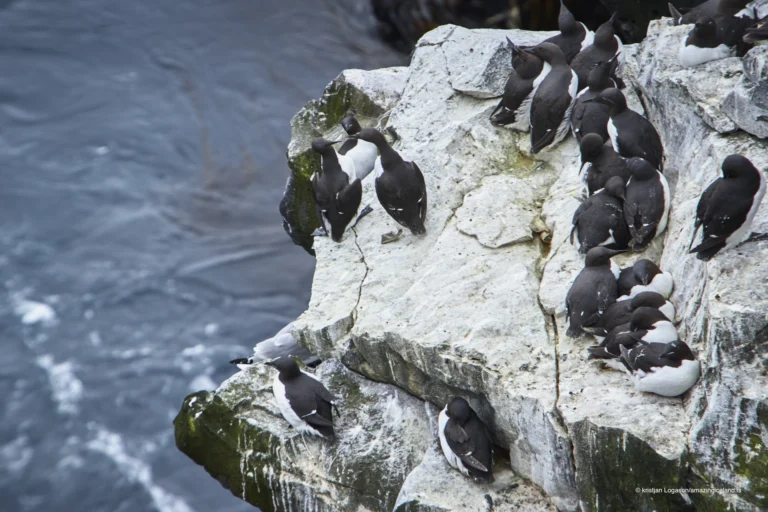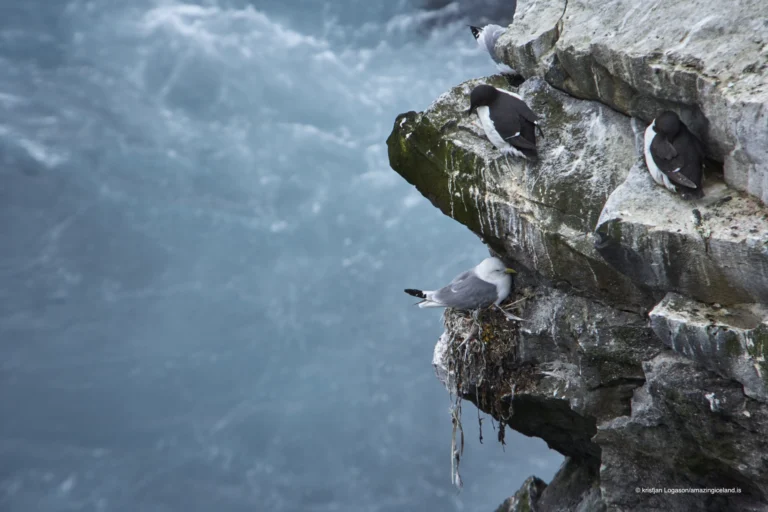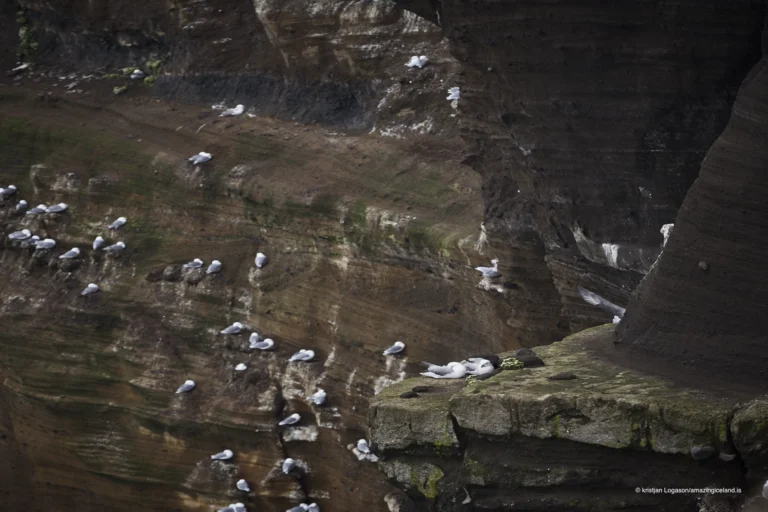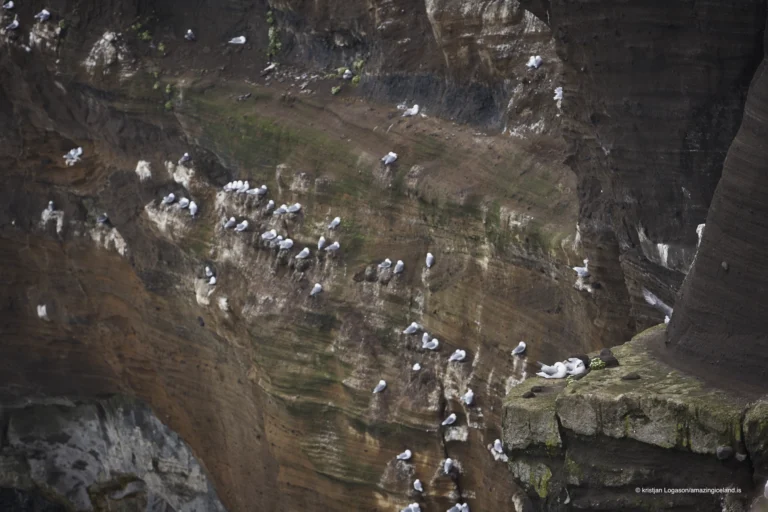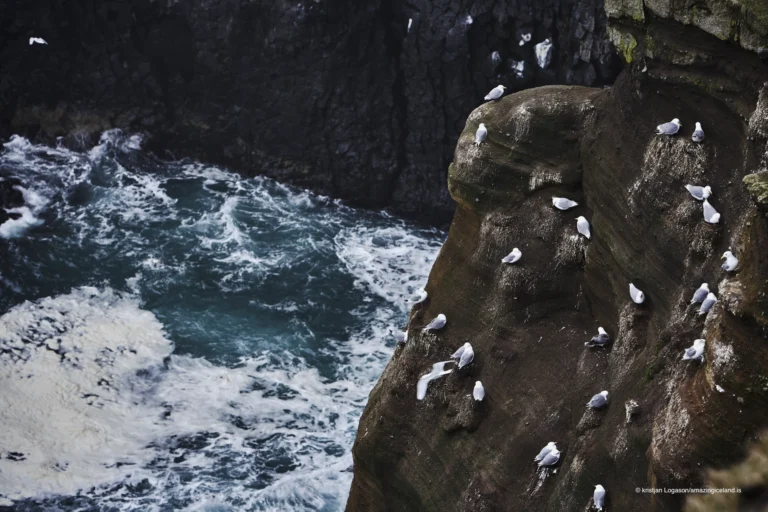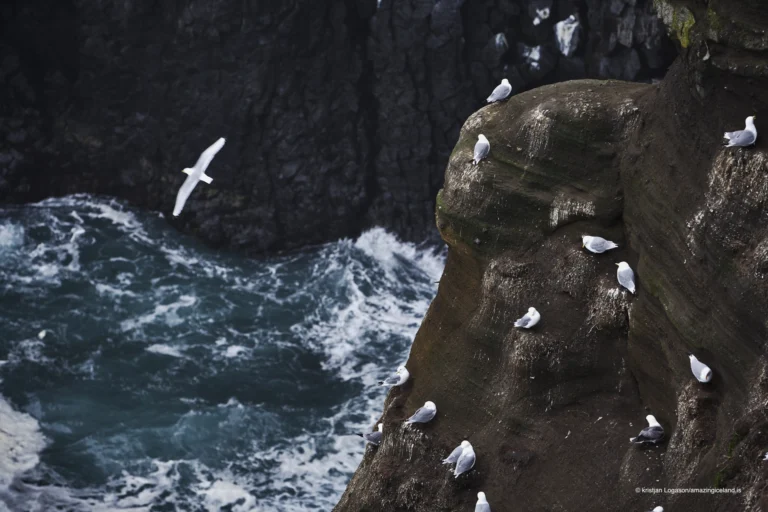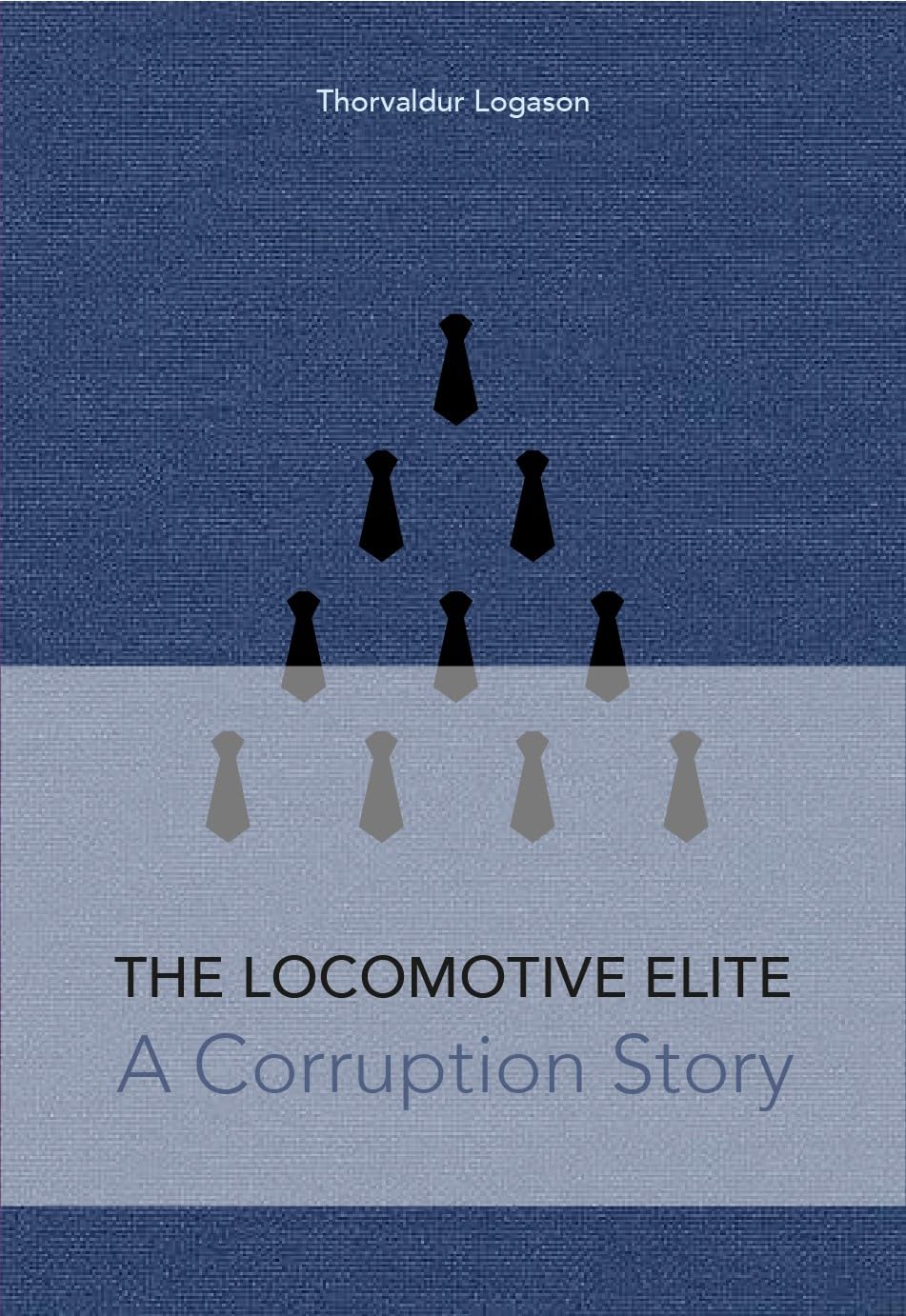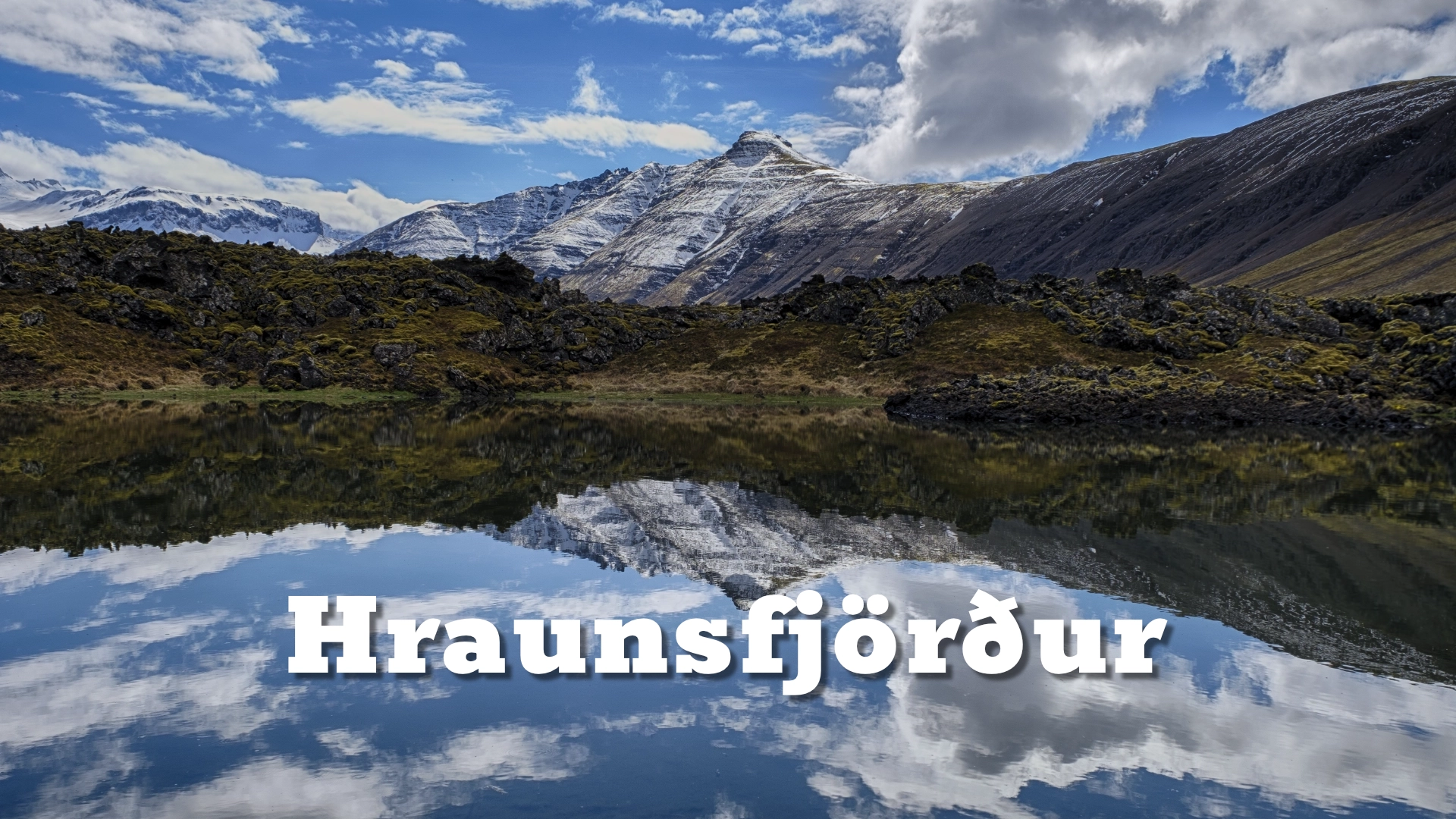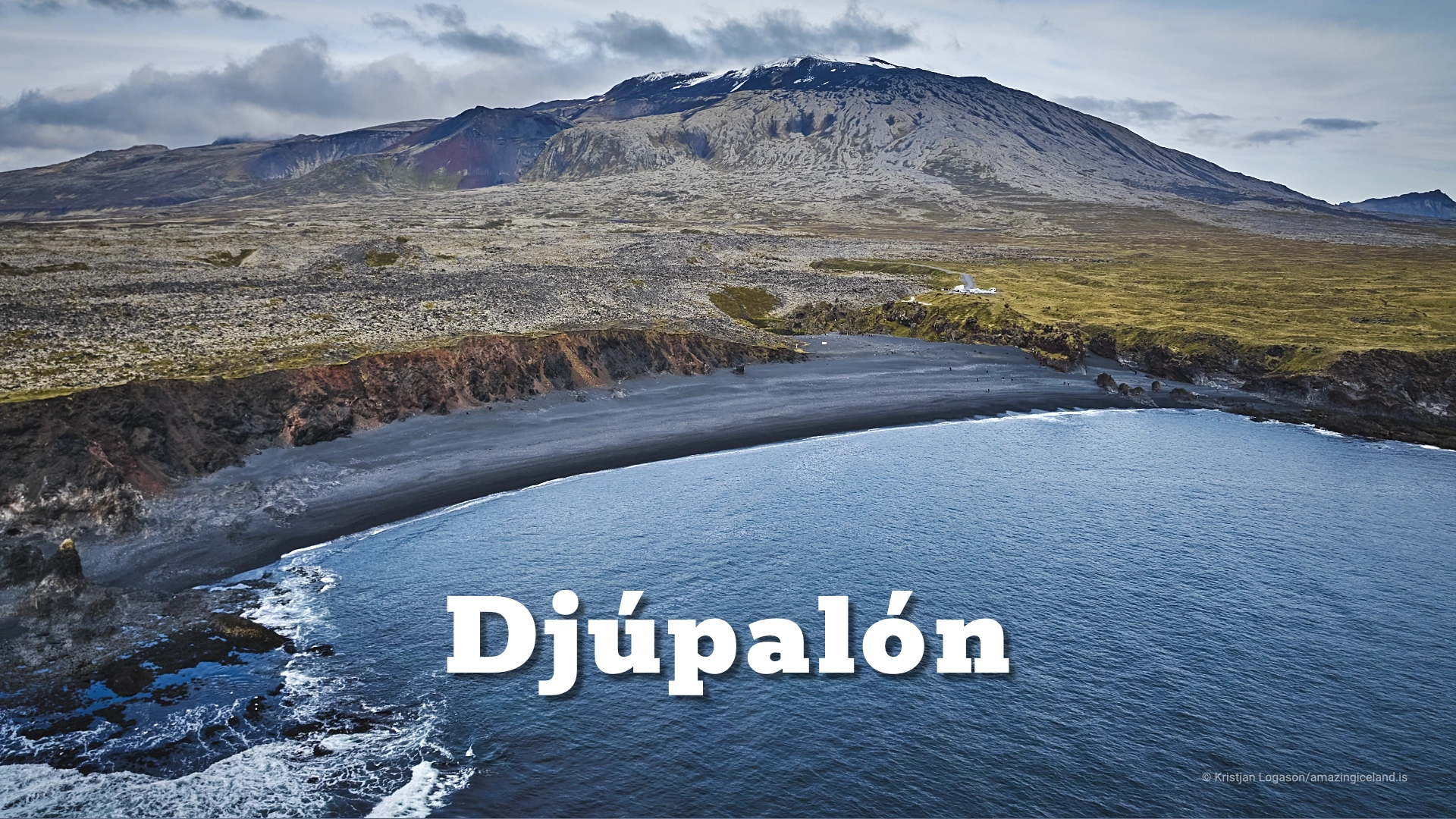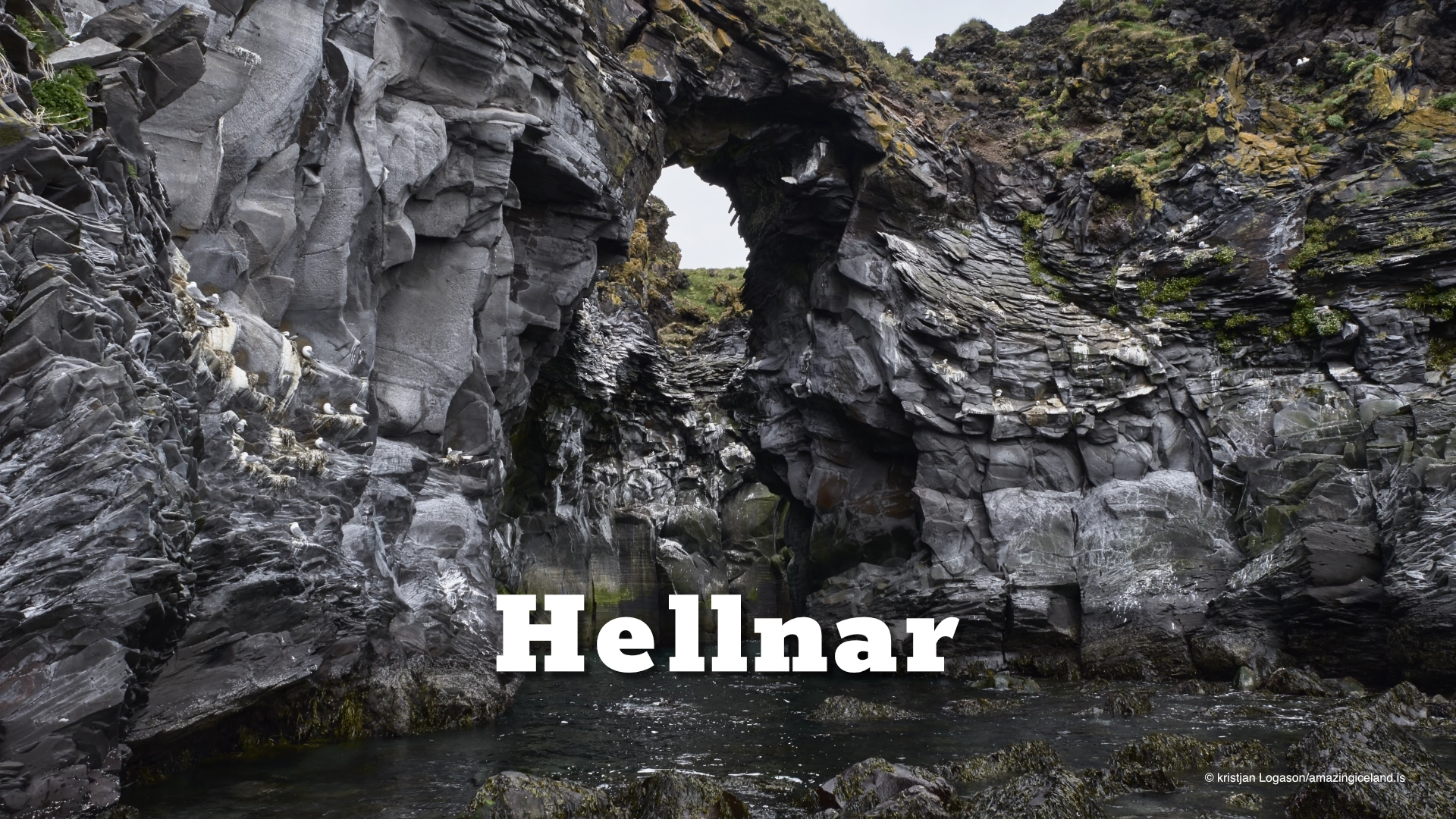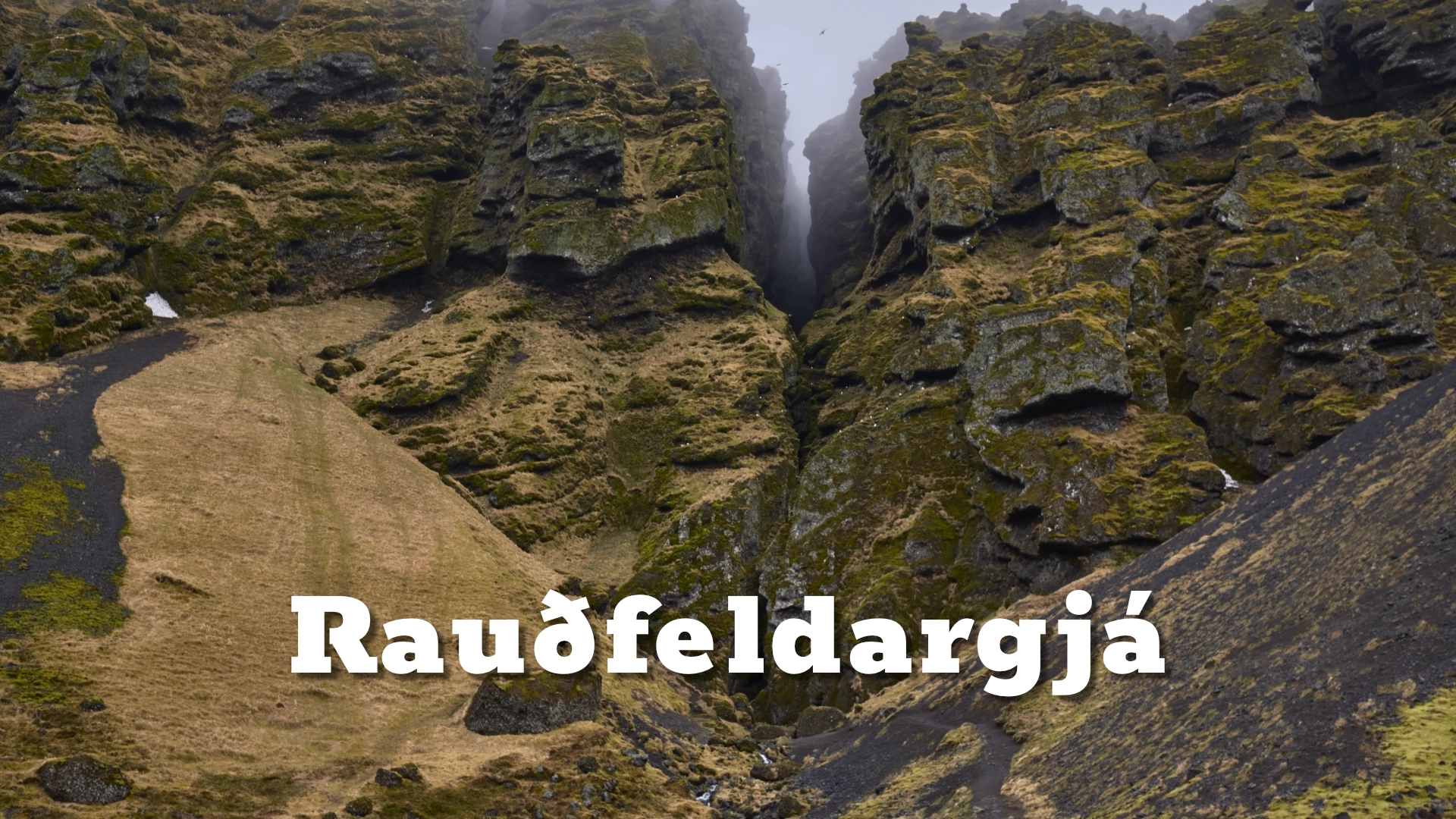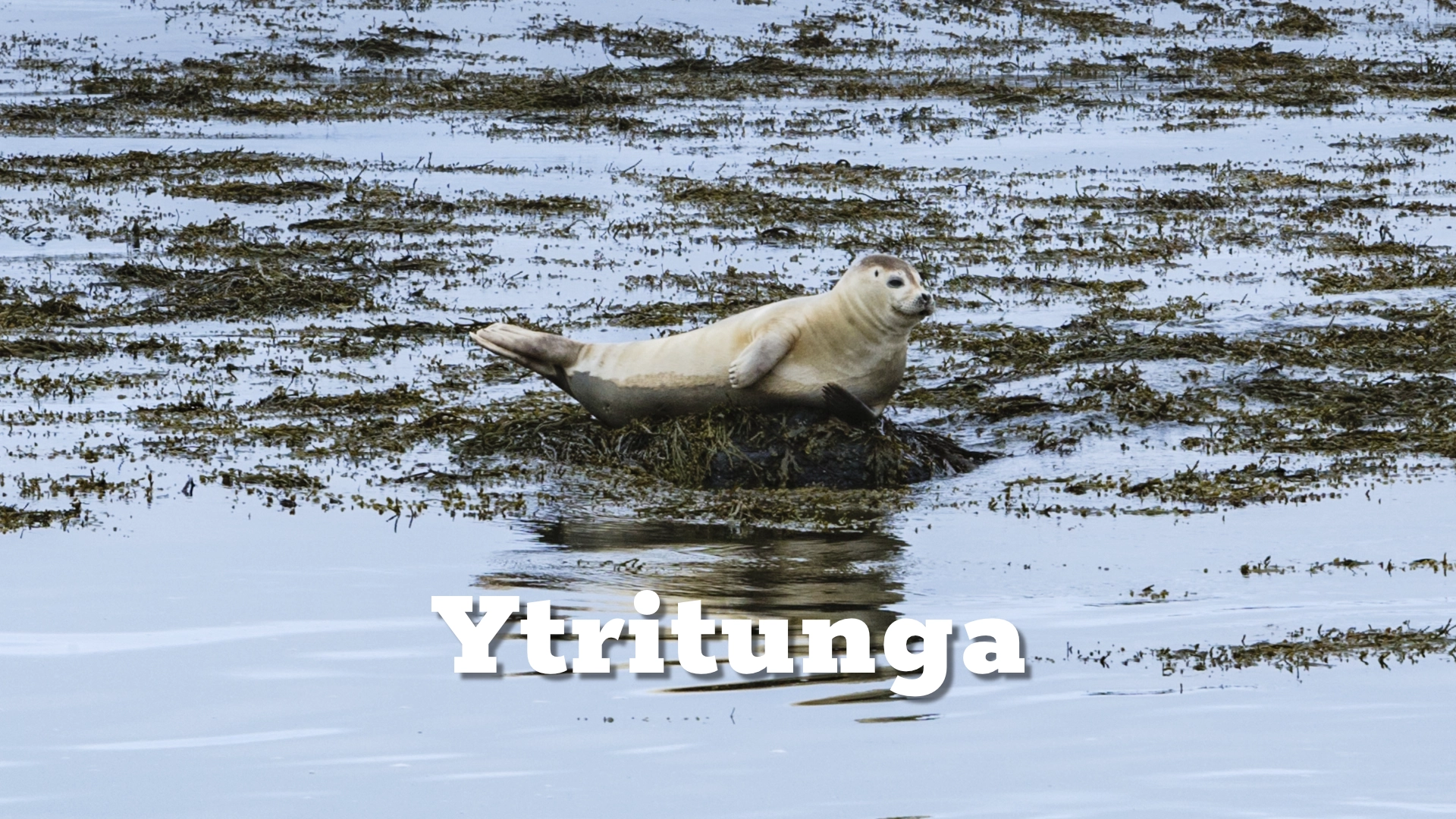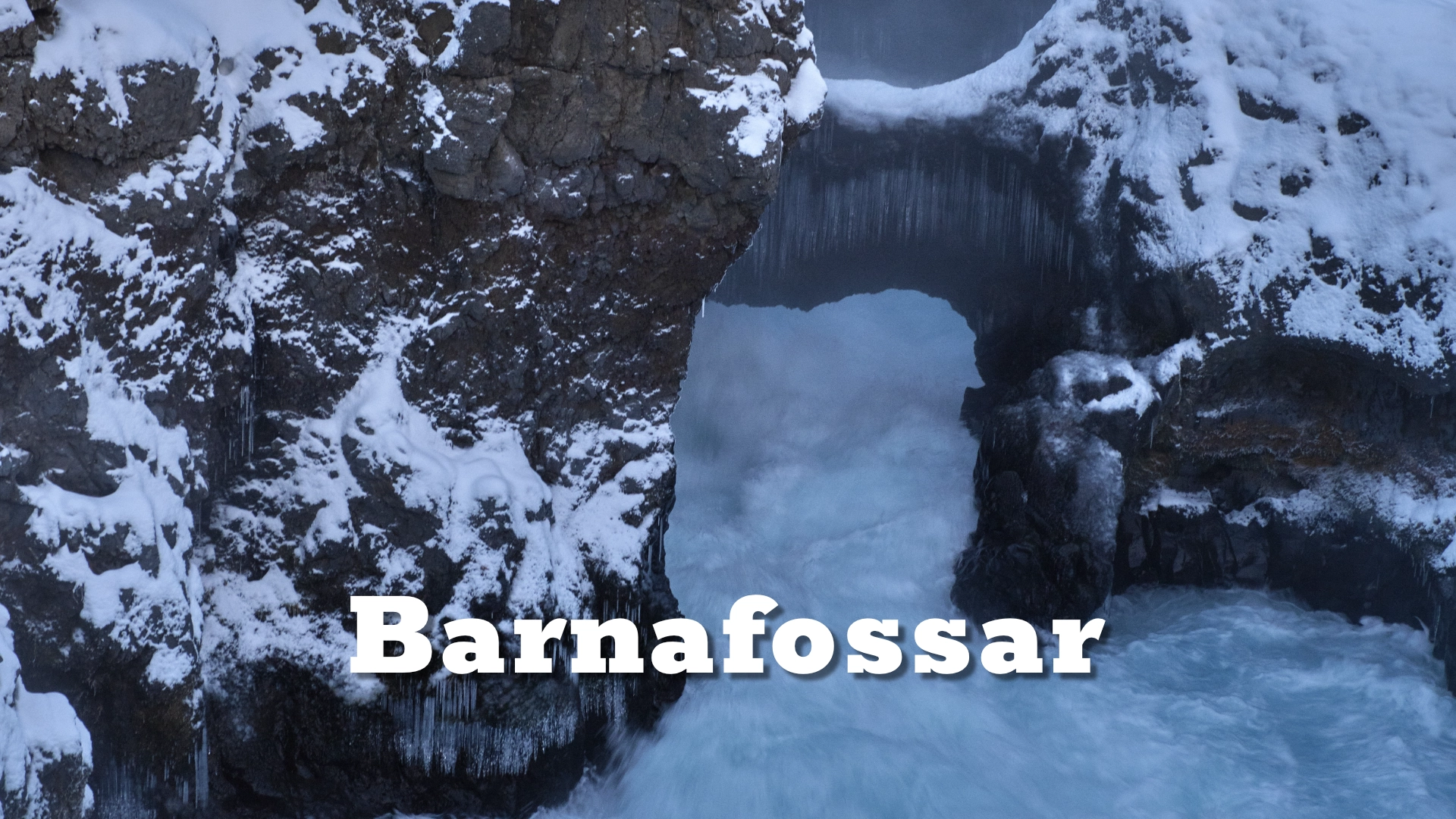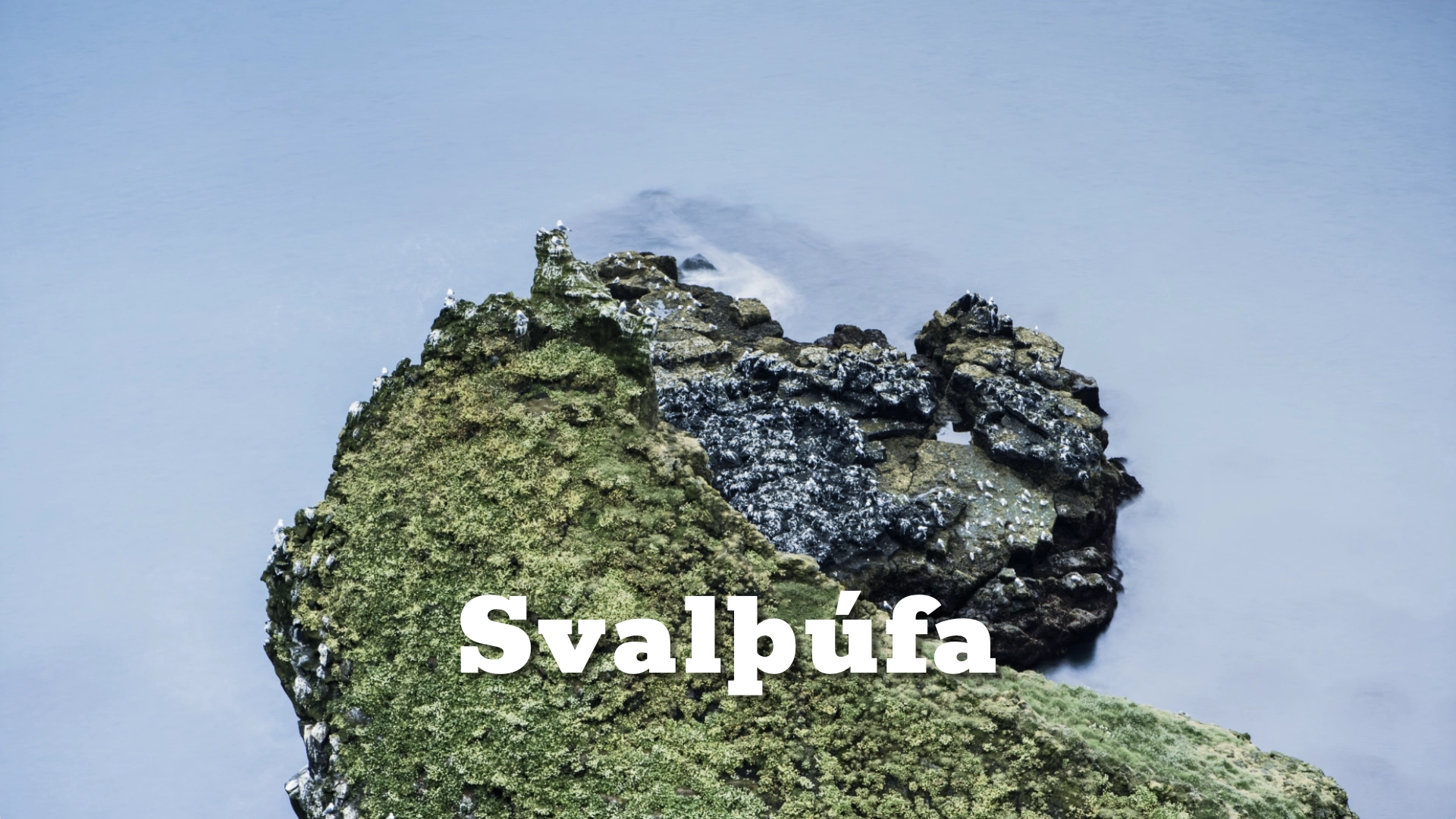
Þúfubjarg is a stunning coastal cliff located on the northern coast of the Snæfellsnes Peninsula in western Iceland. This area is renowned for its dramatic landscapes and natural beauty.
The location of Svalþúfa and Þúfubjarg in Snæfellsnes peninsula
Latitude
64.735116
Longitude
23.774461
Svalþúfa and Þúfubjarg in Snæfellsnes peninsula
The cliffs of Þúfubjarg are shaped by ancient volcanic activity and ongoing erosion, featuring layered rock formations and striking basalt columns. These geological features make Þúfubjarg a fascinating site for geology enthusiasts and nature lovers alike.
Þúfubjarg is a prime location for birdwatching, especially during the breeding season. The cliffs are home to a variety of seabirds, including puffins, guillemots, and kittiwakes. Birdwatchers can enjoy observing these species nesting and thriving in their natural habitat.
The views from Þúfubjarg are breathtaking. Visitors can enjoy expansive vistas of the North Atlantic Ocean and the surrounding rugged landscape. On clear days, the Snæfellsjökull glacier is visible in the distance, adding to the scenic beauty of the area.
The story of the Devil and Kolbeinn Grímsson engaging in a rime duel at Þúfubjarg is an intriguing piece of Icelandic folklore.
According to local folklore, Kolbeinn Grímsson was famous for his sharp wit, poetic talent, and unwavering courage. One fateful day, while Kolbeinn was tending to his sheep near the edge of Þúfubjarg, he was approached by a mysterious figure who soon revealed himself to be the Devil.
The Devil, known for his love of trickery and challenges, proposed a rhime duel—a contest of poetic skill and cleverness. The stakes were high: should Kolbeinn lose, his soul would be claimed by the Devil. Confident in his poetic prowess, Kolbeinn accepted the challenge.
The rime duel began with the Devil reciting complex and sinister verses, each filled with dark imagery and cunning wordplay. Kolbeinn responded with equal skill, crafting verses that were not only clever but imbued with light and righteousness. The duel continued, with each participant trying to outdo the other with increasingly intricate and ingenious rhymes.
As the contest progressed, it became clear that Kolbeinn’s talent and creativity were more than a match for the Devil’s cunning. His verses shone with a brilliance that reflected his pure heart and noble spirit, while the Devil’s words began to falter under the weight of their malevolence.
In a final attempt to win, the Devil recited a verse so filled with darkness and despair that it caused the very air around them to chill. But Kolbeinn, unshaken, responded with a verse of such purity and light that it seemed to dispel the darkness itself. The power of his words was undeniable, and the Devil, unable to match Kolbeinn’s brilliance, was defeated.
Humbled and outwitted, the Devil had no choice but to concede victory to Kolbeinn. Kolbeinn’s triumph not only saved his soul but also solidified his reputation as a master poet and a local hero. The tale of his duel with the Devil has been passed down through generations, celebrated as a testament to the power of wit, creativity, and moral fortitude.
The legend of Kolbeinn Grímsson and the Devil at Þúfubjarg is more than just a story; it embodies the themes of good versus evil, the power of intellect and artistry, and the rich tradition of Icelandic oral history. Visitors to Þúfubjarg can not only appreciate the natural beauty of the cliffs but also feel a deep connection to the mythic past and cultural heritage of this remarkable place.
This story adds a profound cultural dimension to the awe-inspiring landscape of Þúfubjarg, making it a site where nature and legend intertwine seamlessly.
Interesting facts:
The grass on svalþúfa is not cut as the place is thought to be home to elves and cutting the grass could result in a bad spell.
The Locomotive Elite
What do Donald Trump and Iceland’s Locomotive Elite have in common?
Far more than you think.
In The Locomotive Elite, you’ll uncover how a tiny clique in Iceland captured extensive control—of banks, courts, media, and even the central bank.
For decades they ruled, first democratically, then through corruption and in the end through crime, enriching themselves and their cronies while dismantling oversight.
The result?
One of the most spectacular financial collapses in modern history.
